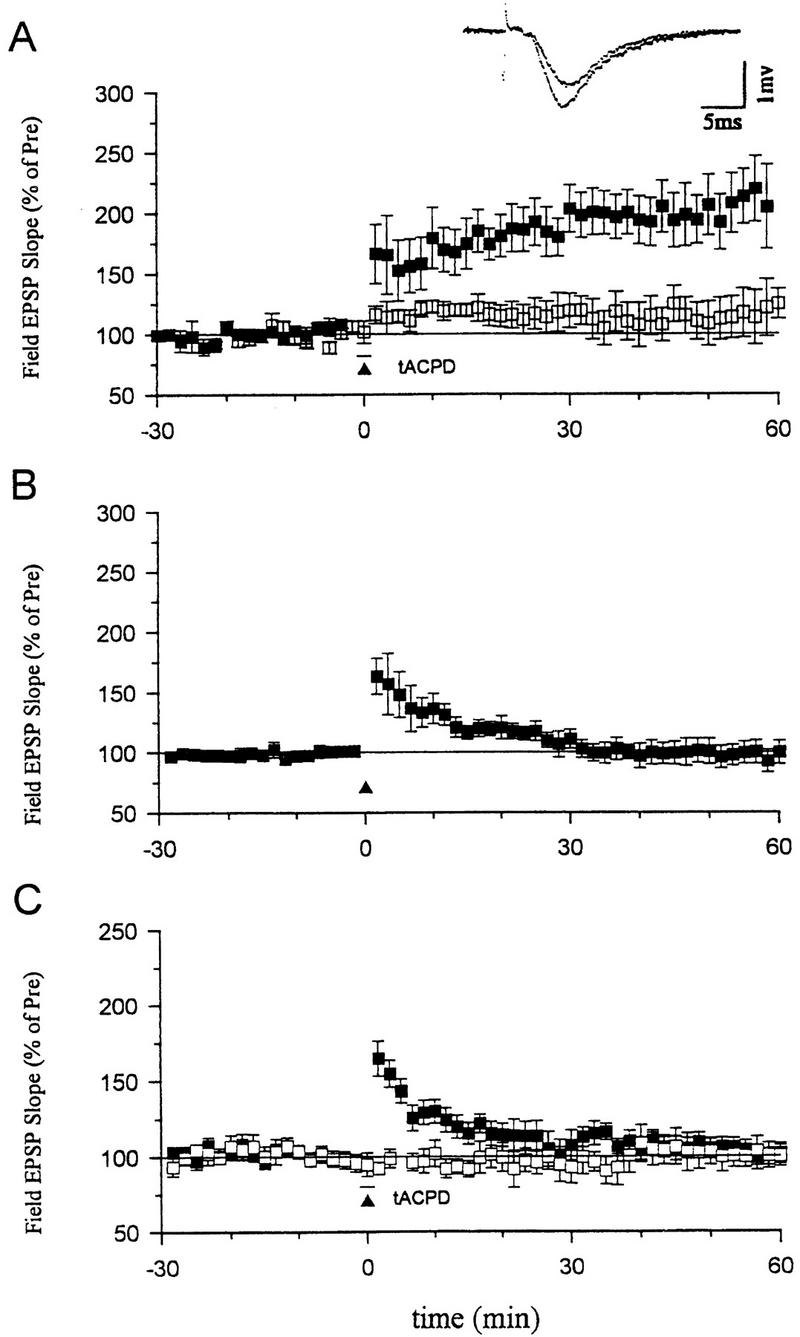Figure 3.

Effects of heme oxygenase inhibitors on long-term enhancement produced by tACPD. (A) tACPD (20 μm, horizontal bar) produced a rapid onset, long-lasting enhancement of the field EPSP (201.5 ± 22.4%, n = 8, t = 4.53, P < 0.01, comparing average EPSPs 50–60 min post-training and 30 min pretraining) when applied at the same time as weak tetanic stimulation of the presynaptic fibers (50 Hz, 0.5 sec, ▴) (paired training). The EPSP at a control pathway in the same slice, which received tACPD alone, was not significantly potentiated (111.7 ± 14.8%). (□) tACPD alone; (█) tACPD paired. (Inset) Representative recordings of the field EPSP before and 60 min after tACPD paired training. (B) Weak stimulation (50 Hz, 0.5 sec) alone did not produce long-term enhancement (96.5 ± 6.7%, n = 7). (C) Heme oxygenase inhibitors (10 μm ZnPP-IX or ZnBG) completely blocked long-term enhancement produced by tACPD paired training (█) (ZnPP-IX, 113.9 ± 8.2%, n = 6; ZnBG, 89.8 ± 5.9%, n = 5). The EPSP at a second control pathway in the same slice was stable (□, tACPD alone) (100.7 ± 7.6%). Results with the two inhibitors were similar and have been pooled. The average prevalues were 0.26 mV/msec (tACPD paired), 0.27 (tACPD alone) (A); 0.26 (B); and 0.25 (paired), 0.30 (control) (C).
